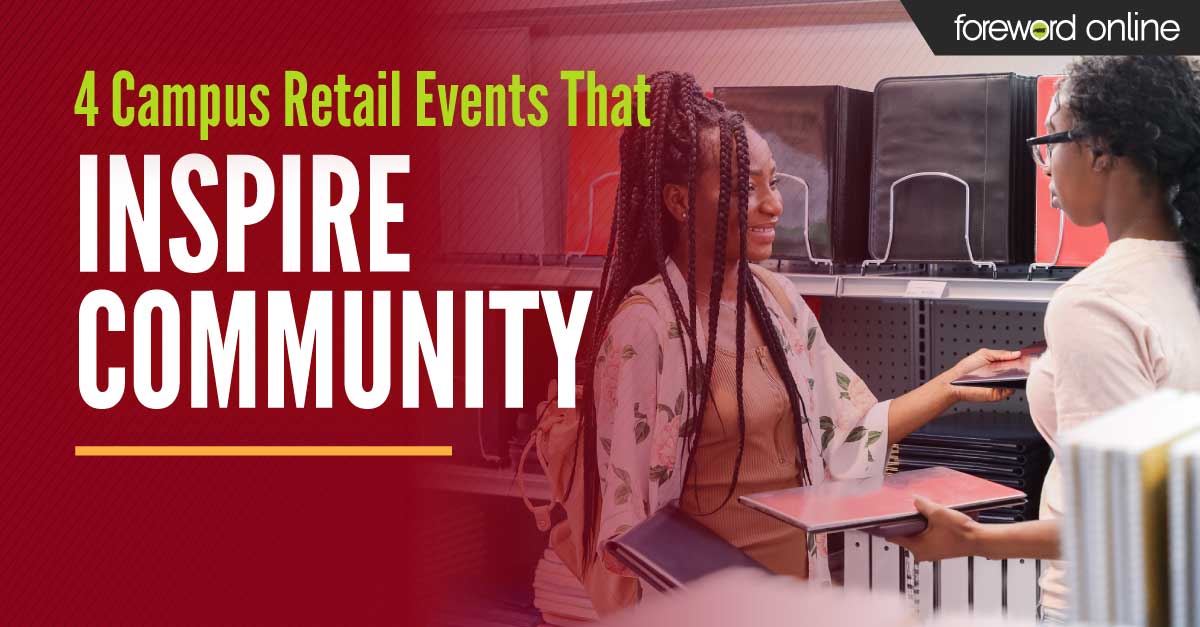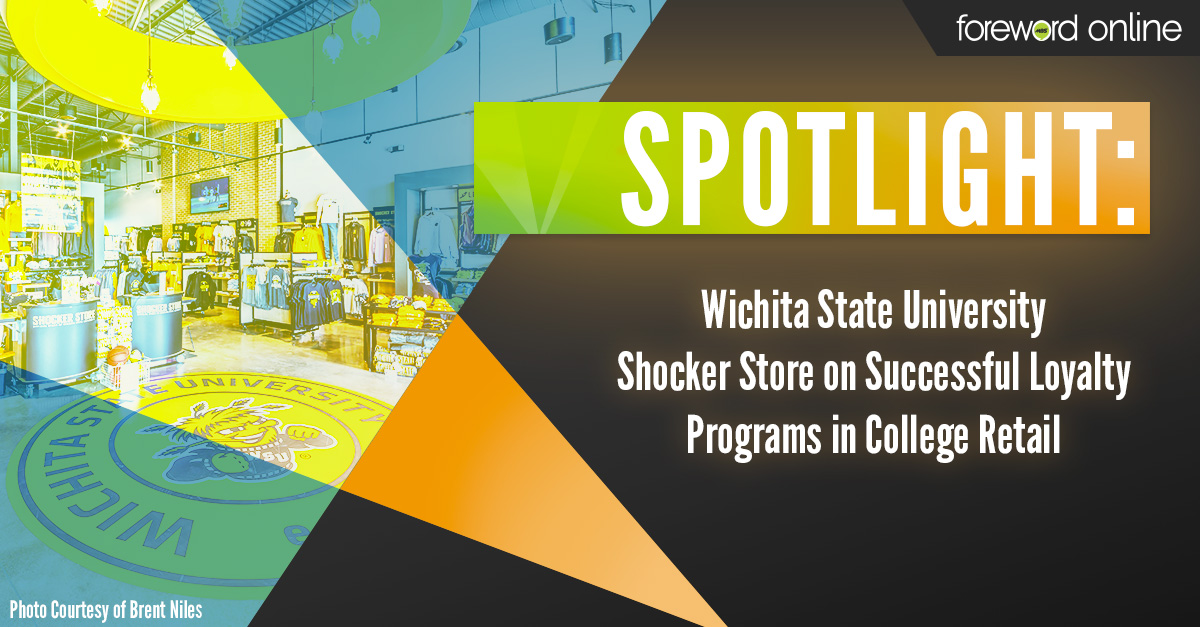At the 2019 ICBA convention in Jacksonville, Florida, Barnes & Noble College’s Vice President of Marketing Ken Wincko and Director of Campus Relations for the Northeast Territory Jennifer Russell had the opportunity to present to the Large Store Group members of the Independent College Bookstore Association (ICBA). There, they shared Barnes & Noble College retail trends and insights and gave audience members a look at the future of collegiate retail.
 Recently, we had the opportunity to sit down with Wincko to discuss the latest retail trends and where the market is headed. He shared the fundamental market challenges facing collegiate retail as well as the four key components to the evolution of college stores.
Recently, we had the opportunity to sit down with Wincko to discuss the latest retail trends and where the market is headed. He shared the fundamental market challenges facing collegiate retail as well as the four key components to the evolution of college stores.
The fundamental market challenges of college retail
During the presentation, Wincko and Russell discussed the top three market challenges that large collegiate retailers must overcome to continue to thrive in the current market.
The number of licensed retailers
There are thousands of national competitors who also license college and university apparel. College retailers face more competitors now than ever before especially large school brands. Fashion brands like Tommy Bahama, Victoria Secret’s PINK, Columbia, Carthartt, etc. have launched collegiate apparel lines hoping to attract loyal college fans. School brands must find a way to stand out among thousands of national competitors and dozens of local competitors on a daily basis.
The store’s value perception
What is the store’s role on campus and within the college community? Stores must define and explore how their role on campus has evolved with retail innovations and customer expectations. Retail strategies must be redefined in terms of customer experience.
The widening technological divide
With almost unlimited research and development funds, the Amazons of the world have a technological advantage that is nearly impossible for most retailers to keep up with. However, college stores can leverage their footprint on campus and within the local community to better engage students, alumni and fans.
Four key components to help college retail evolve
College stores must find ways to overcome these market challenges as well as strengthen their position as a campus hub and student resource. Wincko and Russell shared the four key components college retail should focus on going into the future.
1. Merchandising curation and customization
One of the key points from our student trends research is that students don’t want to seem like they are trying too hard to be fashionable, but fashion is still important to them. Stores need to identify national and local-level trends that influence the student fashion choices on your campus.
Barnes & Noble College conducts regular local and national student market research to ensure our stores are ready to supply students with the merchandise they want. Right now, our apparel research shows:
- Athleisure apparel is popular across genders and schools
- Students are gravitating toward quieter color choices
- Students want casual styles
For non-apparel items, electronics is a fast-growing category. Anything related to mobile devices is popular, whether it's Beats by Dre headphones or mobile accessories. Also, Yeti tumblers are a popular choice.
Another important part of curation and customization is maximizing your hot market opportunities. Coming into March Madness or any tournaments, college stores must be prepared to take advantage of the merchandise opportunities that arise. Providing this almost instant customization ensures your store remains a leader in fan apparel and helps celebrate your school’s victories.
2. Next-generation college retail experience
Our research shows that, of course, affordability is important to students. However, beyond that, the top three things that students want from their brick-and-mortar retail experience are style and selection, outstanding service, and an inviting atmosphere. Students, especially Gen Z, still really like the brick-and-mortar experience. In fact, 75 percent of Gen Z shoppers said they prefer to shop in stores.
However, they also want a specific retail shopping experience. Students want to shop in the stores where they can find things that fit into their lifestyle. Because of that, style and selection can be a big retail driver. Likewise, the store atmosphere is also important to students. They typically choose stores where they feel comfortable hanging out because the store reflects them and their values. And finally, like any other consumer, students want outstanding service. Those three things are really the trifecta of creating a total shopping experience for students.
As our bookstores evolve, those are the main elements we are focused on to improve the customer’s retail experience. When we refurbish stores, we do so with the mindset of creating new student experiences that focus on school pride and legacy, as well as the local community. Barnes & Noble College store designs are multifunctional, so we can create social and academic community hubs. Our stores offer multifunctional spaces, study areas, meetings rooms, cafés and a variety of other spaces designed with campus needs and student comfort in mind.
Whether students come to the store for a game day, a music night or a de-stress event, the store is always a welcoming space designed specifically for them.
3. Omnichannel student engagement
College stores must ask how can we provide a more seamless cross-channel experience for consumers? From social media and email to the website and mobile app, the omnichannel experience is critical.
Students expect a tailored experience that shows stores or brands understand them and what they need on a personal level. Social media provides a natural space to develop this hyper-personalized approach. Students are already active on social media every day. A great social media strategy comes down to reaching the right person at the right time. College stores must invest time and resources into developing this strategy to maximize the channel of communication.
Students also want their online shopping experience to have that same ultra-personalized feel. In fact, 80 percent expect tailored ads that target location and recognize interests and habits. That’s why it is so important for college stores to have a strong mobile presence. A student’s overall experience with your store will be based on a variety of factors, including mobile branding and the way your sites function. For example, whether or not your sites have a mobile-first design can change your customers’ entire perception of your store.
Our mobile app has been a huge driving force for online engagement. We have over 1.3 million students nationally using the app, and it creates a lot of engagement. On top of that, we are focused heavily on providing best-in-class eCommerce. eCommerce solutions like our online Fan Shops take our stores far beyond just the campus and the local community. They are designed to reach out to alumni and fans worldwide, strengthening the school’s brand and fostering those vital relationships.
4. Student success
College stores must go beyond just providing course materials. They also need to provide value and help improve student outcomes. By bringing programs like inclusive access to campus, the college store ensures student preparedness and college affordability.
To implement initiatives like this and achieve outstanding results, college stores must partner with academic departments and achieve campus-wide buy-in for the programs. Collegiate retailers can also help ensure faculty are aware of the various ways they can drive down the cost of course materials, whether it's with digital or physical textbooks.
Last year, 61 percent of college students reported that they were not prepared on the first day of class. This challenge means college stores must protect students’ academic success by ensuring they have the materials they need for class. Barnes & Noble College’s First Day Program, for example, makes sure that students are prepared for the first day of class. We work in partnership with the academic community on campuses to ensure students have the resources they need to be successful. All of our stores work tirelessly to develop strong campus relationships that benefit the entire community.
The next era of retail is here. Collegiate retailers must evolve and continue to push the envelope to better serve the whole student. By upgrading students' omnichannel experience, providing a next-generation retail experience, customizing and curating merchandise students want, and investing in student success, you not only secure your store’s future but help students elevate their lives through education.





